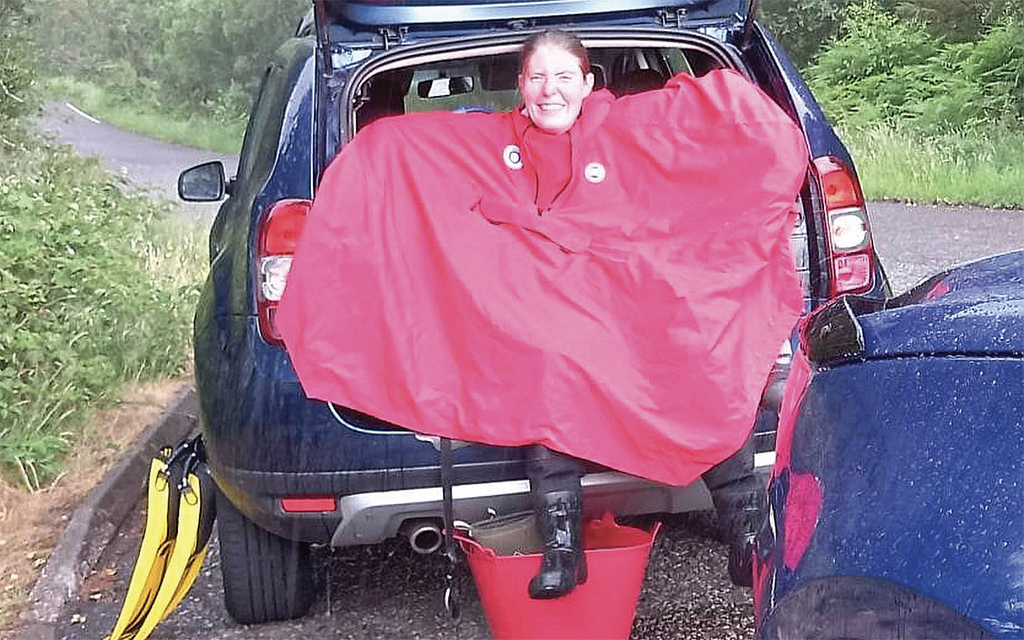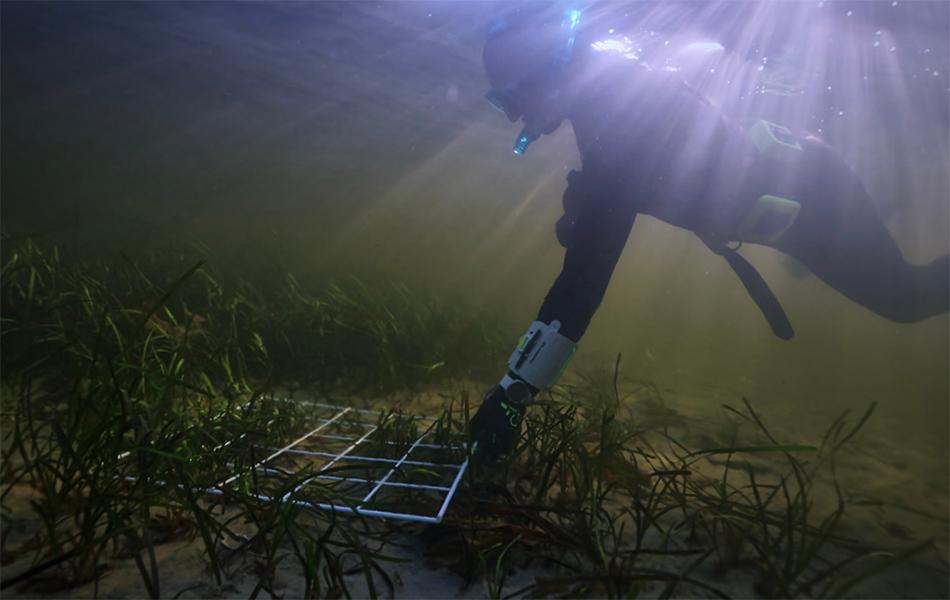
Photo: Kerry attempts to keep herself and her car boot dry between dives during a Scottish summer deluge!
It’s that cold soggy season. I’m still diving but it’s that time of the year when you’re dryer under the water than above it. A good set of waterproofs for the surface is as important as a DRYsuit beneath the waves.
Have you ever thought about what makes a waterproof coat effective? One that’s lightweight, durable, and breathable, but still keeps you dry in the soggiest of Scottish seasons. I’m sure Gore-Tex and their Durable Water Repellent (DWR) springs to mind for many of you. Let’s delve into this invisible world of water-repellent coatings and refresh our school chemistry knowledge.
DWR is a chemical from a group of over 4,700 industrial chemicals known as PFAS. This stands for per- or poly-fluorinated alkyl substances (PFAS). Put more simply, they all share a similar molecular structure of a carbon chain, and the element fluorine. PFAS first came into common use in the 1950s.
PFAS repel water and oil by changing the surface tension to make liquids ‘bead’ and run off rather than soaking into the material. This makes PFAS useful for a whole range of products, including water and stain-resistant fabrics, food packaging, toiletries, carpet and paper treatments, non-stick cookware, chrome plating, bike chain oil, ski/snowboard waxes, and firefighting foams (AFFF).
So what’s the catch? The carbon-fluorine bond in PFAS is one of the strongest known to nature. Some forms of PFAS can take over 1,000 years to degrade, giving PFAS their better-known name as the ‘forever chemicals’. Almost all the PFAS ever made are still in our environment today.
Few PFAS are currently regulated for their persistence or toxicity. The ones that have been studied in-depth are toxic. We know they can cause harm to both humans and wildlife and we know that once they get into our environment there is virtually no way we can get rid of them. Evidence suggests these traits are likely to be shared across this chemical group.
We can’t see molecules of PFAS spreading throughout our environment, but they are there. The PFAS used in our everyday products leak into our environment during production, use and disposal. The greaseproof paper for our pre-dive bacon buttie might disintegrate and slowly disappear, but the chemicals left behind could damage the environment for thousands of years.
PFAS outlive both the products that contain them and the people that buy them. PFAS leak from landfills and recycling, and can’t be removed by standard water treatment works. They flow out with treated water into our waterways and oceans or flow through our taps and get sprayed onto our fields.
We know PFAS can harm the immune and reproductive system, as well as the kidneys, liver, and neurological function of bottlenose dolphins, sea otters and arctic polar bears. They have been recorded in our air, rain, ground and tap water, rivers, lakes, oceans, sediment, plants and wildlife, and even the breast milk we feed our children.
A class action lawsuit against US chemical company DuPont is one of the largest epidemiological studies ever carried out over seven years. Blood samples were taken from almost 70,000 people whose drinking water had been contaminated with PFOA (a type of PFAS). The results proved links between PFOA exposure and six specific conditions; high cholesterol; ulcerative colitis; thyroid disease; testicular cancer; kidney cancer; and pregnancy-induced hypertension.
While we as customers have limited power to stop these massive issues, it is important to educate ourselves and make the best choices we can. Gore-Tex is changing the water-repellent coating on its products to avoid known harmful PFAS and variants called PFC’s. Paramo is also PFAS free. When you replace your not-so-dry waterproofs, choose a manufacturer that is trying to be better for the planet.
You can also easily hunt for PFAS in your home using nothing but olive oil. Try this little experiment while you’re in hibernation and digesting your festive feast: pfasfree.org.uk/beadtest
Editor’s note: Gore-Tex has committed to eliminating PFCs of Environmental Concern from its products by the end of 2025
Article ‘The cost of DRY’ by Kerry MacKay first published in SCUBA magazine, Issue 152 January/February 2025.




